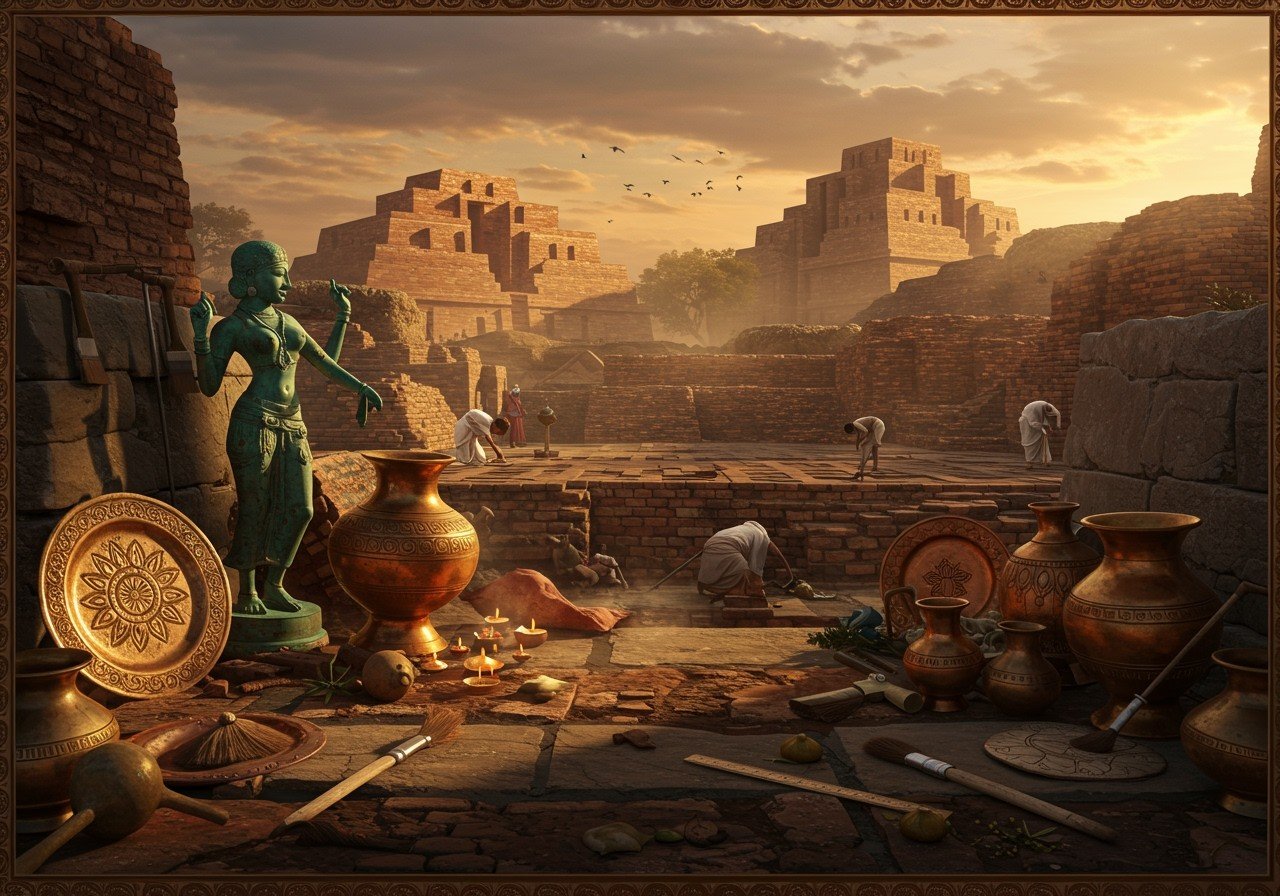
The Bronze Age in India, spanning from approximately 3300 to 1300 BCE (with some sources suggesting 7000 to 600 BCE), represents a pivotal period in the subcontinent’s history. This era witnessed the rise of sophisticated civilizations, most notably the Indus Valley Civilization, renowned for its urban planning, intricate drainage systems, and enigmatic script. The civilization’s growth stemmed from neighboring villages, adopting Mesopotamian irrigation techniques to flourish in the fertile Indus River valley. Key urban centers like Harappa and Mohenjo-Daro stand as testaments to their ingenuity.
Key Archaeological Sites of the Bronze Age
The Indus Valley Civilization, also known as the Harappan Civilization, boasts several prominent archaeological sites that offer glimpses into this fascinating era. These sites reveal a complex and advanced society.
- Harappa and Mohenjo-Daro: These cities exemplify advanced urban planning, with meticulously laid-out streets, sophisticated drainage systems, and impressive architectural marvels. Their intricate designs speak volumes about the civilization’s engineering prowess.
- Dholavira: This site stands out due to its unique and highly effective water management system, a testament to the ingenuity of ancient engineers. The intricate network of reservoirs and canals demonstrates a deep understanding of water conservation.
- Lothal: As a significant port city, Lothal sheds light on the maritime trade practices of the Indus Valley Civilization. Its strategic location facilitated trade networks spanning across the Arabian Sea and beyond.
Furthermore, sites like Rakhigarhi and Kalibangan contribute valuable insights into the regional variations within the civilization. These discoveries help us understand the socio-economic structures, trade networks, and cultural practices prevalent during Bronze Age India.
Mapping the Indus Valley Civilization
The Indus Valley Civilization stretched across a vast geographical area, extending from present-day Pakistan through northwestern India. The strategic positioning of settlements near rivers like the Indus and Ghaggar-Hakra played a vital role in their agricultural and trade activities.
- Connectivity: A complex web of trade routes connected various sites within the civilization, fostering economic growth and cultural exchange. This network facilitated the movement of goods and ideas across vast distances.
- River Systems: The Indus and Ghaggar-Hakra rivers served as lifelines, supporting the growth and sustenance of urban centers. These rivers provided water for irrigation, transportation, and daily life.
- Climatic Conditions: The prevailing climatic conditions significantly influenced the development and eventual decline of the civilization. Changes in weather patterns and environmental factors played a crucial role in their fate.
Metallurgy and Weaponry
The Bronze Age witnessed remarkable advancements in metallurgy. A variety of weapons and tools, including bronze swords, axes, and arrowheads, were crafted with increasing skill. The techniques employed in bronze casting and alloying showcased the technological expertise of the time.
- Weapons in Warfare and Hunting: The development of bronze weapons had a profound impact on warfare and hunting practices, providing insights into the socio-political dynamics of the era. The use of metal weapons marked a significant shift in military technology.
- Notable Artifacts: The discovery of copper-bronze weapons at Daimabad offers valuable evidence of the metallurgical skills of the people. These artifacts reveal the techniques and materials used in weapon production.
- Artistic Aspects: Many weapons featured intricate decorations and inscriptions, demonstrating the artistic sensibilities of the craftsmen. These embellishments provide glimpses into the cultural and aesthetic values of the time.
The trade in metal goods suggests the exchange of technological knowledge and resources between different regions, further stimulating innovation and development.
Daily Life and Culture in the Indus Valley
The artifacts unearthed from various sites offer fascinating glimpses into the daily lives and cultural practices of the Indus Valley people. Pottery, seals, jewelry, and tools reveal their artistic skills and aesthetic sensibilities.
- Pottery and Tools: Skilled artisans crafted intricate pottery, used for storing grains, cooking, and rituals. Bronze tools, such as axes and knives, were essential for daily tasks and agricultural activities.
- Seals and Jewelry: Steatite seals, featuring animals, mythical creatures, and an undeciphered script, were likely used in trade and administration. Jewelry made of gold, silver, and semi-precious stones reflects their appreciation for adornment.
- Social Structure and Religious Practices: Well-planned cities suggest a structured society, with public baths and granaries indicating a focus on hygiene and organization. Ritual bathing in the Great Bath at Mohenjo-Daro and terracotta figurines suggest religious practices centered on nature and possibly mother goddesses.
- Economic Activities: Agriculture, with crops like wheat, barley, and cotton, formed the economic backbone. Advanced irrigation ensured a steady food supply. Lothal’s prominence as a port city highlights their maritime trade, extending to Mesopotamia, Persia, and Central Asia. Specialized workshops produced pottery, beads, and tools, contributing to a thriving economy.
Connecting with the Past: Ritual Vessels at Poojn.in
Poojn.in offers a unique opportunity to connect with India’s rich Bronze Age heritage through its collection of authentic copper ritual vessels. The Ananda Kosha-Kushi collection features pure copper vessels reminiscent of those used in ancient times. These include:
- Pure Copper Ananda Kosha-Kushi (550g, 11-inch): This traditional vessel evokes the craftsmanship of the Bronze Age, offering a tangible link to the past.
- Arghya Patra and Bhoj Patra: These essential ritual items maintain the continuity of ancient practices, bridging the gap between past and present.
Visit poojn.in to explore these beautifully crafted copper vessels and bring a touch of ancient wisdom into your modern spiritual practices.
Conclusion
The Bronze Age in India stands as a testament to the ingenuity and cultural richness of ancient civilizations. The archaeological discoveries from this era provide invaluable insights into urban planning, craftsmanship, trade, and daily life, enriching our understanding of India’s vibrant past. Exploring these treasures allows us to appreciate the remarkable contributions of these civilizations and their enduring legacy.


